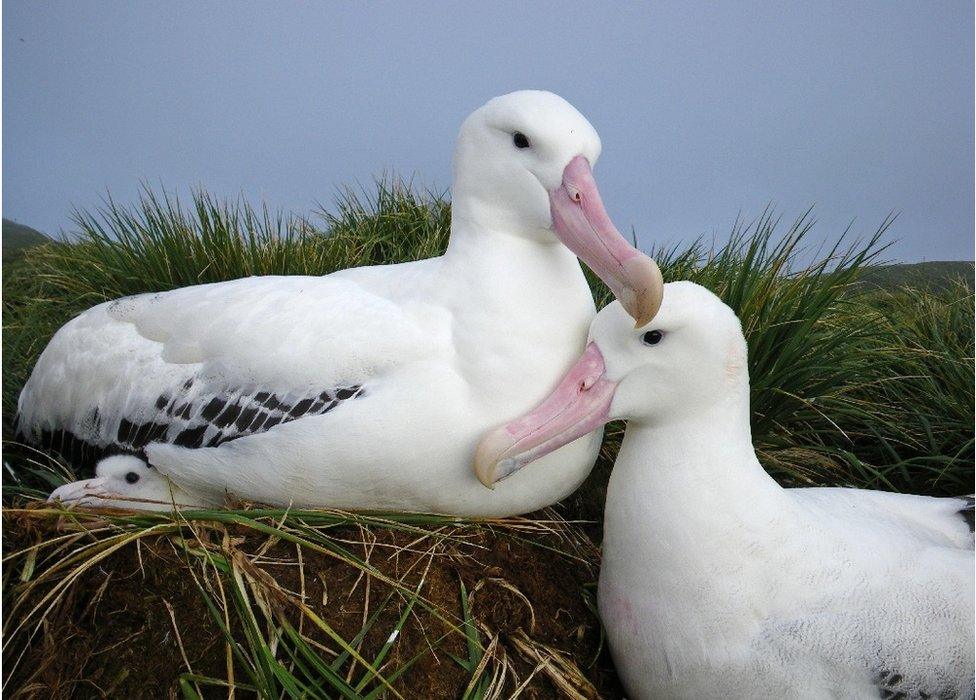Albatrosses hit by fishing and climate
- Published

There are about 700 breeding pairs of wandering albatrosses on Bird Island
The spectacular wandering albatrosses in Sunday's Blue Planet programme on the BBC have suffered a major decline in numbers over the past three decades.
New research suggests breeding pairs of this species are now little more than half what they were in the 1980s.
Scientists say the losses are the result of careless fishing practices and climate pressures.
The researchers are affiliated to the British Antarctic Survey (BAS), which organised the filming for the TV show.
BAS has been running a long-term tagging and monitoring study on Bird Island, a 4km-long stretch of land on the western fringes of South Georgia in the South Atlantic.
The animals' global population is spread across only a handful of sub-Antarctic territories.
The wandering albatrosses are not the only species, though, to experience a slump.
Black-browed and grey-headed albatrosses have followed a similar trend.
"These populations have all declined over the period we've been monitoring them," said BAS expert Richard Phillips.
"There have been different phases, so for the wandering albatrosses there was a gradual decline and then it got really steep before things slowed up. Some of the variability is down to a changing environment; some of it is down to fishing effort."
Albatrosses will often try to take the bait on longline fishing gear. They get snagged on the hooks, are pulled under the water and are drowned.
In the immediate vicinity of South Georgia, toothfish trawlers have modified the way they put their lines out to limit this collateral damage, but the birds forage over thousands of square km and will often encounter vessels that still do not use the most sensitive fishing methods.
And sometimes, shifts in climate can drive the birds towards this danger, says Dr Deborah Pardo, the lead author on the new research.
"We also found the grey-headed albatross population was particularly affected by the climatic event of El Niño, which coincided with increased fishing activity in their foraging areas.
"El Niño reduced the amount of food available so the birds probably switched to feeding on discards behind fishing vessels, increasing the number being hooked on longlines."
Not all climate effects are negative. The recent increasing trend towards stronger poleward winds actually benefits the wandering albatrosses.
"Such winds make their flight more efficient," Dr Phillips told BBC News. "They can fly faster. Essentially, these winds make the cost of travel cheaper for them."
Sunday's programme considered the breeding outcomes for elderly pairs of wandering albatrosses.
Separate BAS research has established that the very last chicks these senior albatrosses produce will often succeed and flourish.
Dr Phillips explained: "There's a theoretical prediction that if a bird is about to die then it might put more effort into rearing the last chick, or the alternative is the very fact that it has reared that chick has a cost - there's a cost of reproduction - and subsequently the bird won't recover and it will die for that reason."
Currently on Bird Island there are roughly 700 pairs of wandering albatrosses, 3,000 pairs of grey-headed albatrosses and 7,000 pairs of black-browed albatrosses. The longterm study detailing the falls in population is published in the journal Proceedings of the National Academy of Sciences, external.
Jonathan.Amos-INTERNET@bbc.co.uk, external and follow me on Twitter: @BBCAmos, external
- Published4 May 2017
